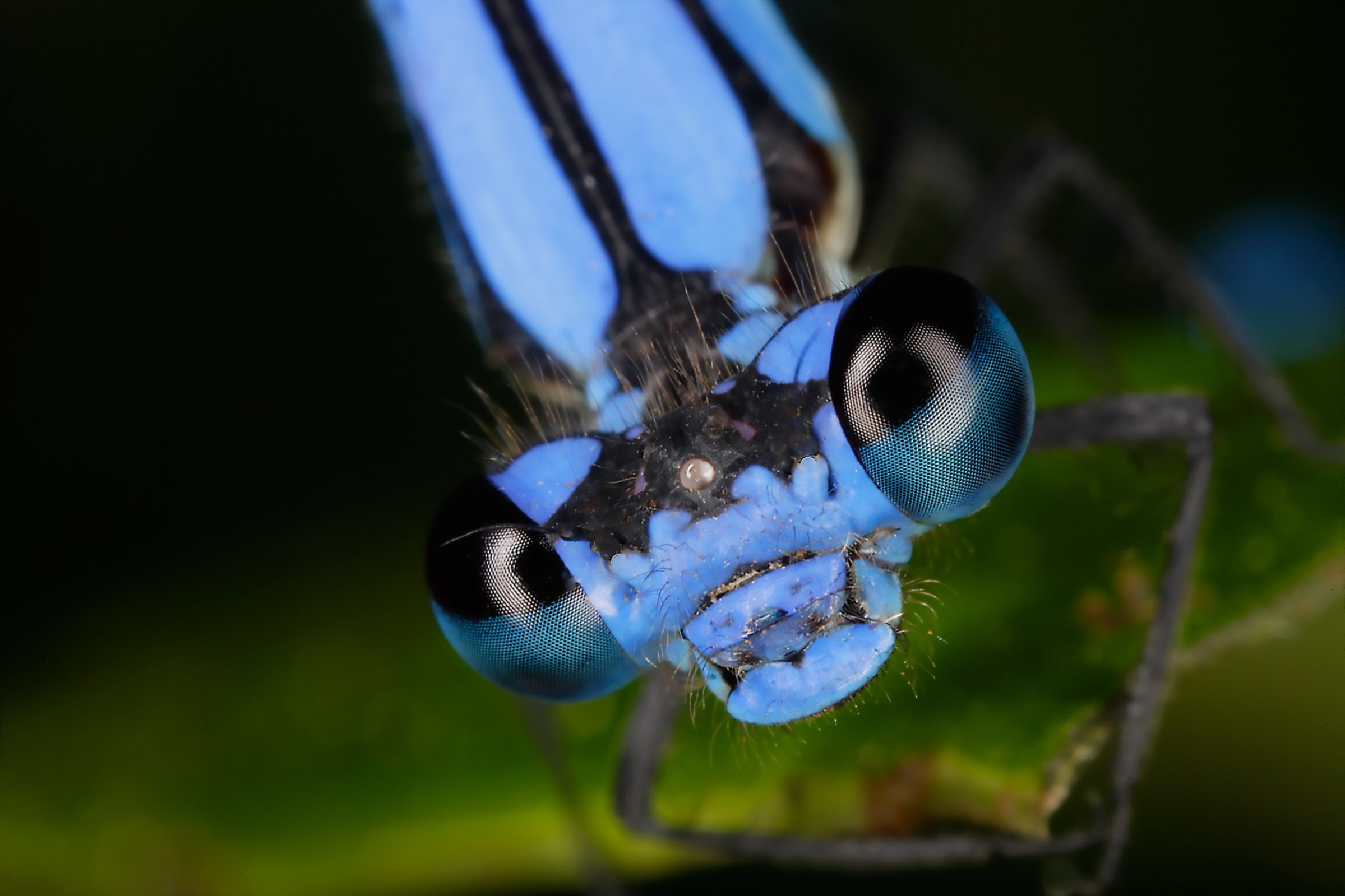
Nobody went to Colombia to get well in the early 1990s. Actually, few people went there even to visit—what with the drug wars and the political wars and the State Department warnings against traveling anywhere in the country.
But Robert Oelman did go to Colombia in that dangerous era, and what he found there was peace and purpose. It was, improbably, the country’s insect life that was responsible, and their story—Oelman’s and the katydids’ and the mantises’ and the leaf hoppers’—is told in the dazzling new documentary Learning to See, which premiered in March at the SXSW Film Festival and has just been released on iTunes, Amazon and other video-on-demand platforms.
Learning to See, produced and directed by Oelman’s son Jake, is, at bottom, a tale about insect photography—which is not usually the stuff of compelling narrative. But the story of the photographer and the startling quality of his photographs change all of that. Oelman was, in his first career, a psychologist, but it was a role that came not to suit him. The pain of his patients and his inability to help them all grew to be too much for him. “[He] felt he was failing his patients and his patients were failing him,” says Oelman’s brother Bradford in the film.
“It was time,” Oelman says, “for me to go do something else.”
That something else revealed itself to him in the pages of Love in the Time of Cholera, the celebrated novel by Colombian Nobel Laureate Gabriel García Márquez. Oelman was struck by both the story the book told and the picture it painted of the ease and openness of the people of Colombia. And he was struck especially by one line describing one character: “He allowed himself to be swayed by his conviction that human beings are not born once, but that life obliges them over and over to give birth to themselves.”
Oelman decided to do just that, giving up his practice in Boston and relocating to Colombia. He bought a plot of land in the mountains just outside of Cali and restored a finca—or country house—there. Ultimately, he began photographing the life on his land, beginning with hummingbirds, which he learned are impossible to photograph—or at least photograph well—without a very high speed shutter and a close-up lens. From there he moved to insects.

It is impossible to watch Learning to See without feeling some—quite a lot, actually—of the wonder and respect Oelman feels in the presence of his subjects. That is not an easy thing to achieve. The human aversion to bugs is old and it runs deep, so much so that it inspired the 2013 book The Infested Mind: Why Humans Fear, Loathe and Love Insects. The fear and loathing part comes from the genuine menace insects pose—stinging, biting, carrying disease—as well as from what we see as the exceeding creepiness of their body plans. They are like us—with heads, limbs, eyes, mouths—but so very different too that they cross the line from intriguing to revolting.
And yet there’s the love, and that’s what Oelman’s pictures find. They find it in the dazzling colors of bugs; in their extraordinary mix of textures—the armored mantises, the pulpous caterpillars, the diaphanous wings of the flying insects. They find it, too, in the extraordinary ability of some insects to camouflage themselves. Deer and leopards may be dappled or spotted to blend in with forest lighting, but if one is standing in front of you, there no mistaking the fact that it’s there. But the leaf-mimicking katydid—with what appear to be the same brown spots, the same mold markings, even the same missing pieces on its wings as old, damaged leaves—can vanish entirely into its surroundings.
“Whatever a leaf can be, these guys are mimicking,” Oelman says.
Insects mimic personality too, and while that is surely just the human observer imposing human traits on an animal that may not even have any meaningful consciousness, the impression is there all the same. Oelman says that some of his subjects seem almost to be posing for him, which would be nonsense—is nonsense—except that as you watch their behavior, it’s hard not to share that anthropomorphic illusion. The mantises more than most seem almost to have an eerie awareness of the giants with their cameras standing around them. Oelman concedes that this is probably just a biomechanical trick: alone among the insects he photographs, mantises have the ability to pivot their heads on flexible necks—to look back at the camera as the camera looks at them.
Ultimately, Learning to See makes a case not just for the beauty of bugs, but for the worth of bugs. They are a foundation of the food web, yes. But they are also creatures in full—complicated, elegantly built, living elaborate lives most of us never even consider. “If something is small, human beings ignore it,” Oelman says in the film. “And that’s a big problem.” It’s a problem Learning to See could go a long way to rectifying.
More Must-Reads From TIME
- The 100 Most Influential People of 2024
- The Revolution of Yulia Navalnaya
- 6 Compliments That Land Every Time
- What's the Deal With the Bitcoin Halving?
- If You're Dating Right Now , You're Brave: Column
- The AI That Could Heal a Divided Internet
- Fallout Is a Brilliant Model for the Future of Video Game Adaptations
- Want Weekly Recs on What to Watch, Read, and More? Sign Up for Worth Your Time
Write to Jeffrey Kluger at jeffrey.kluger@time.com